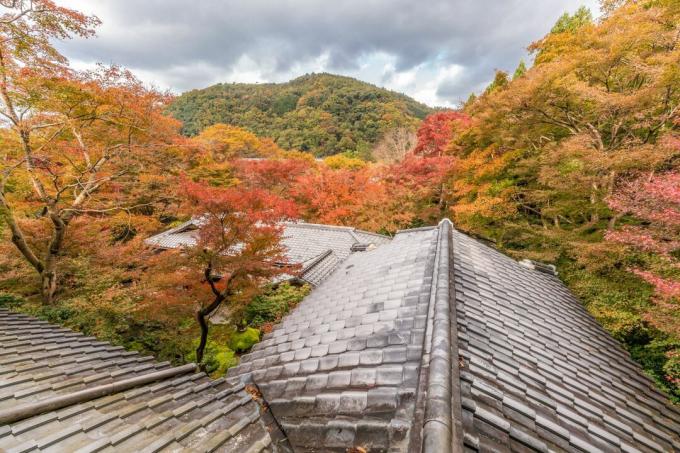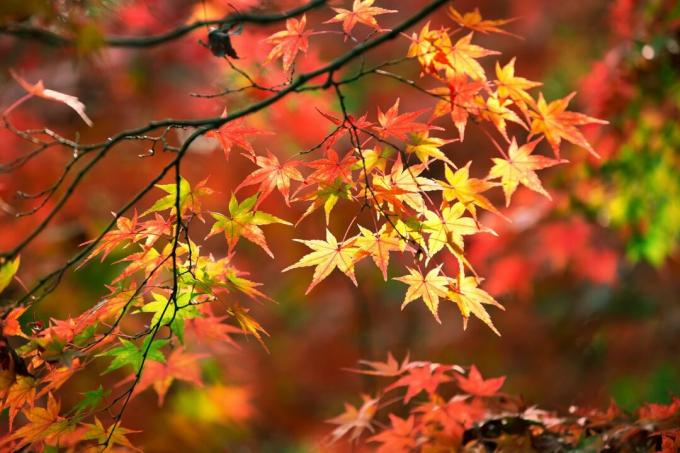The Japanese maple from the Far East has no special requirements, but is still happy about fertilization. We show how to properly fertilize maple.

maple (acer) is a diverse genus of trees found in temperate latitudes worldwide. While our native maple species such as Norway maple (Acer platanoides) and the sycamore (Acer pseudoplatanus) can grow into mighty trees, Japanese maple species usually remain small. All the more impressive is their magnificent autumn colouring, which has meanwhile transformed many gardens into a true spectacle of colour. The two most common species are the real Japanese maple (Acer japonicum) and the Japanese maple (Acer palmatum). These two are very similar and are both commonly referred to as Japanese Maple.
Although the Japanese maple includes a wide variety of varieties, even different species, they have very similar requirements. No wonder, because they all come from Japan – as the name suggests. There they grow naturally in forests, which are rather humid and mildly tempered due to the proximity to the sea. And if the habitat is already so similar, then so are the needs and demands that the plants have.
The basic rule when fertilizing is: The most beautiful autumn colors come from those specimens of the Japanese maple that have been fertilized the least. So less is definitely more. In their homeland, the decorative plants usually grow on stony ground where nutrients are not exactly sown in abundance. Therefore, fertilize as needed and sparingly.

The perfect time to fertilize maple
The growing season for the Japanese maple begins in spring, between April and May. Then it is also time to supply the sprawling plant with nutrients. Only choose long-term fertilizer that releases its nutrients over time. This one-time fertilization in the spring is completely sufficient for the undemanding plant. Later fertilization can even lead to damage in winter if the plant does not stop growing in time due to too many nutrients.
How to properly fertilize maple
Japanese maples should not be over-fertilized. Too much affects the stability, health and foliage color of the plant. An excess of nitrogen in particular can lead to susceptibility to cold and instability.

Planted specimens often do not even need to be fertilized at all. In their environment there are usually enough nutrients that the plants can reach with their roots. In particular, if you do not remove the fallen leaves, sufficient nutrients are always available. Potted plants, on the other hand, do not have such a rich selection and are happy about long-term fertilization, which they receive in spring.
Fertilize maple organically: Application recommendation
A good place to start when fertilizing your Japanese maple is to leave the foliage under the tree in the fall. Because the foliage still contains some nutrients that the maple could not extract from the leaf before the leaf fell, such as nitrogen and potassium. As soon as they fall from the tree, they are decomposed by a host of ground creatures. In this way, the nutrients contained are released again for the plant and can be absorbed again.

However, this return of nutrients is not enough - after all, the Japanese maple still has to provide for an increase in shoots and leaf mass. For this reason, it makes sense to distribute a predominantly organic complete fertilizer every year in spring. You can simply push aside the foliage and sprinkle the fertilizer underneath. Under no circumstances should you work it in, as this would damage the shallow roots of the Japanese maple. A balanced fertilizer like ours Plantura organic universal fertilizer is perfectly suited because it supports the formation of humus with its animal-free organic content. Since the maple loves fresh, humus-rich and nutrient-rich soil, it benefits from its structure in the long term.
A moderately nutrient-rich finished or green waste is also well suited for the nutrient supply.compost as fertilizer, which can also be distributed in spring. Of course you can also compost the leaves of the maple, but then it is recommended Covering the root area with another mulch material, such as pine bark or bark mulch.
Fertilize maple minerally
If you opt for mineral fertilizers, you should also attach importance to the long-term effect. Mineral fertilizers are usually quickly available for the plant, but must therefore also be given very regularly. This quickly becomes too much for the Japanese maple. It is therefore better to choose a depot fertilizer that you supply the tree with once in the spring.
Fertilize maple naturally with home remedies
As with most plants, you can use your old Japanese maple coffee grounds bring to use. Just mix a portion of it into the top layer of soil in spring. Coffee grounds have the advantage that, in addition to the nutrients, they bring a certain acidity. Since the Japanese maple feels good at a pH value between 4.5 and 7, i.e. in the acidic to slightly acidic range, this home remedy is ideal. The nutrient content in coffee grounds is also not very high, which only benefits the already undemanding maple.
